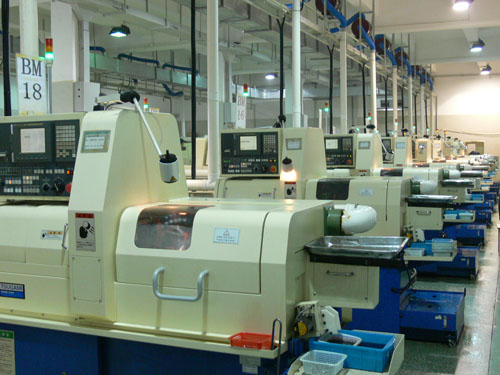 It is understood that domestic machine tools currently have less than two percent of the capacity to meet, and the rest rely on imports. In this respect, in our mid- to high-end products, a relatively strong market competitiveness has not yet been achieved. Especially in the high-end product areas, there are not many good real market applications. There are even a large number of technical innovations. Staying at the stage of samples, exhibits and guilds has not been fully verified by the market, let alone form market competitiveness.
It is understood that domestic machine tools currently have less than two percent of the capacity to meet, and the rest rely on imports. In this respect, in our mid- to high-end products, a relatively strong market competitiveness has not yet been achieved. Especially in the high-end product areas, there are not many good real market applications. There are even a large number of technical innovations. Staying at the stage of samples, exhibits and guilds has not been fully verified by the market, let alone form market competitiveness. In addition, the cumulative imports of China's machine tool products increased by 2.1% year-on-year in the first ten months of last year, and the growth rate has been positive for four consecutive months. The data shows that from January to October 2012, the processing center, grinders, special processing machine tools, lathes, forming or stamping machine tools ranked among the top five in terms of import value of various types of metal processing machine tools. Among them, the processing center imported 42,000 units worth US$7.44 billion, accounting for more than 50% of the imports of metal cutting machine tools, and 41.3% of the imports of metal processing machine tools.
Although the output value of China's machine tool industry has ranked first in the world and has experienced rapid growth for ten consecutive years, the structural contradiction that has emerged throughout the industry has become increasingly prominent. At the 6th executive director (expanding) meeting of the 6th China Machine Tool & Tooling Industry Association held recently, industry insiders stated that the machine tool market situation is very serious this year.
It is worth noting that the survey conducted by the China Machine Tool Industry Association on key enterprises shows that although the machine tool market is generally weak, there has been no apparent decline in mid-to-high-end CNC machine tools and corresponding ancillary products. The demand for non-standard and personalized products has shown an increasing trend. According to the monthly export data of machine tool products, the growth rate has gradually declined from the double-digit growth at the beginning of last year to single digits, and it was negative growth in August and October last year. The trend is clearly in the down channel. In the major processing operations of key users such as the national defense industry, the share of domestic high-end machine tool products is small, and a considerable number of problems exist.
Product homogeneity often coexists with price wars. Major companies in countries such as Germany and Japan have introduced new strategies for the Asian market, especially the Chinese market. They have extended downwards on the basis of high-end dominance and focused on expanding the mid-market. These trends have further aggravated the plight of the domestic machine tool industry. Enterprises need to focus on dealing with several relationships, one is the relationship between short-term interests and long-term interests; the second is the relationship between scale expansion and product level; third is the relationship between hardware investment and software construction; and fourth is the relationship between product development and industrialization. Wang Weiming, deputy director of the Department of Equipment Industry of the Ministry of Industry and Information Technology, said that it has now been determined that the technical transformation of enterprises under the supervision of the Ministry of Industry and Information Technology will rise to the height of the overall plan of the central government. The industrial development environment of CNC machine tools will become better and better.
Fluorinated carbon black is a new type of fluorocarbon material based on carbon black.It has potential application value in lubricating oil additives, high temperature lubricating materials, mold release agents, water-proof and oil-proof materials and anticorrosive coatings.
Shandong Zhongshan Photoelectric Materials Co., Ltd , https://www.cnzsem.com